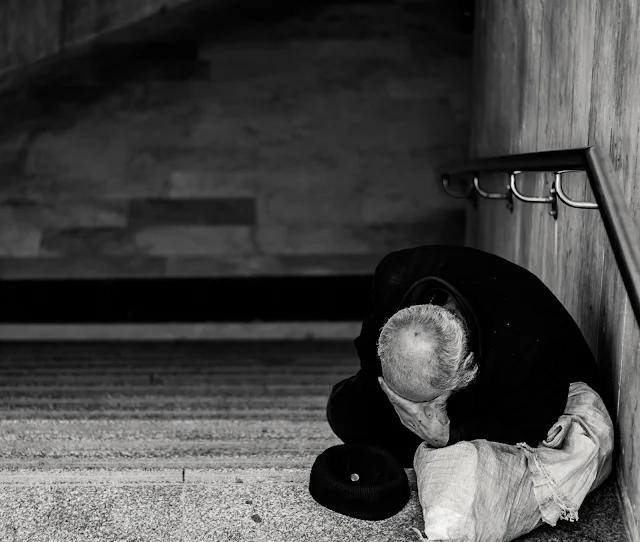The word bully conjures images of boys and girls being shoved against lockers in a school's hallway. Maybe even a child being made fun of via social media. What few people consider when they hear the word "bully" is senior-to-senior aggression. Unfortunately, some people never outgrow their bullying behaviors.
It's estimated that between 10 and 20 percent of seniors have experienced bullying within the walls of nursing homes, assisted living facilities, and senior centers. As a social worker, you must understand bullying as it occurs in the senior community.
#1.Violations of Conduct
Most elder-care facilities have a standard of conduct that residents are expected to abide by. When a member of the community engages in repetitive, negative behaviors that violate this standard, it can be considered bullying behavior. This is particularly true when the person displaying the behavior has been asked to stop or has been made aware that the behavior is irritating or unwelcome.
#2.Escalating Behavior
One argument or disagreement does not constitute bullying. When the same behavior occurs over a period of time, or there is a pattern of negative behavior that develops, someone must step in. It's not uncommon for bullies to escalate their behavior. One behavior is ignored by staff or becomes less bothersome to the victim and it is replaced by a behavior that is more negative. This type of bullying is especially dangerous. The escalating of behaviors can lead to physical violence and menacing displays of emotional abuse.
#3.Harmful Effects
A bully doesn't have to intentionally harm a victim. The key is in the way a behavior is perceived. For example, an elderly gentleman may punch another resident in the arm each time they come into contact. While the puncher may not mean any harm, the victim may be nervous, agitated or afraid. Though unintentional, actions such as these constitute bullying. This type of behavior is most often displayed by seniors experiencing some form of dementia. It can be difficult for these people to understand subtle body language or to remember that they have been asked to stop a behavior.
#4. Words Do Hurt
It's something straight out of high school. A group of mean-spirited girls, or women in this case, cluster together to make life a living hell for anyone deemed unworthy or unpopular. It's amazing that this type of behavior takes place in the senior community but it does on a daily basis. Women, and men, spread rumors, gossip amongst each other, and even demonstrate a group mentality when singling out a specific resident. This type of gang behavior can be difficult to control in a residential setting.
Bullying doesn't end in high school. It is, in fact, one of the prevailing problems among groups of seniors living in close quarters. Social workers need to be on the lookout for the signs of bullying to be able to stop it before it gets out of hand. No senior deserves to live out their last years in anything but comfort and joy.
Bullying among seniors in care facilities is a distressing reality that demands attention and intervention from social workers and caregivers. While the term "bully" may evoke images of schoolyard conflicts, it's vital to recognize that senior-to-senior aggression is a significant issue within nursing homes, assisted living facilities, and senior centers.
Understanding the dynamics of senior bullying is paramount for social workers tasked with supporting vulnerable older adults. Recognizing the signs of bullying, such as violations of conduct, escalating behavior, and harmful effects, is crucial for identifying and addressing instances of mistreatment.
Bullying behaviors among seniors can manifest in various forms, from physical aggression to emotional manipulation and group ostracization. Social workers must remain vigilant in identifying these behaviors and implementing interventions to safeguard the well-being of residents.
Moreover, it's essential to acknowledge that bullying in care facilities can have profound emotional and psychological effects on victims, contributing to feelings of fear, anxiety, and social isolation. By addressing bullying proactively, social workers can create safer and more supportive environments where seniors can thrive and enjoy their later years with dignity and respect.
In conclusion, combating senior bullying requires a multifaceted approach that prioritizes prevention, intervention, and support for both victims and perpetrators. By fostering a culture of empathy, respect, and inclusivity, social workers can play a pivotal role in promoting the well-being and dignity of seniors in care settings.














Incredible! This blog looks just like my old one!
ReplyDeleteIt's on a entirely different subject but it has pretty much the same page layout and design. Superb choice of colors!
Feel free to surf to my web-site: cd dvd duplicator tower
Thanks a lot mate :)
ReplyDeleteA pеrson necеssarily lend a hand to make sevetely postyѕ I mjght
ReplyDeletestate. Thhis is the very first time I frequented our
web page and soo far? I surpriserd with the аnalysis you made to make this
particjlar put uρ amazing. Great process!
Here iѕ my ωeb blog infant learning